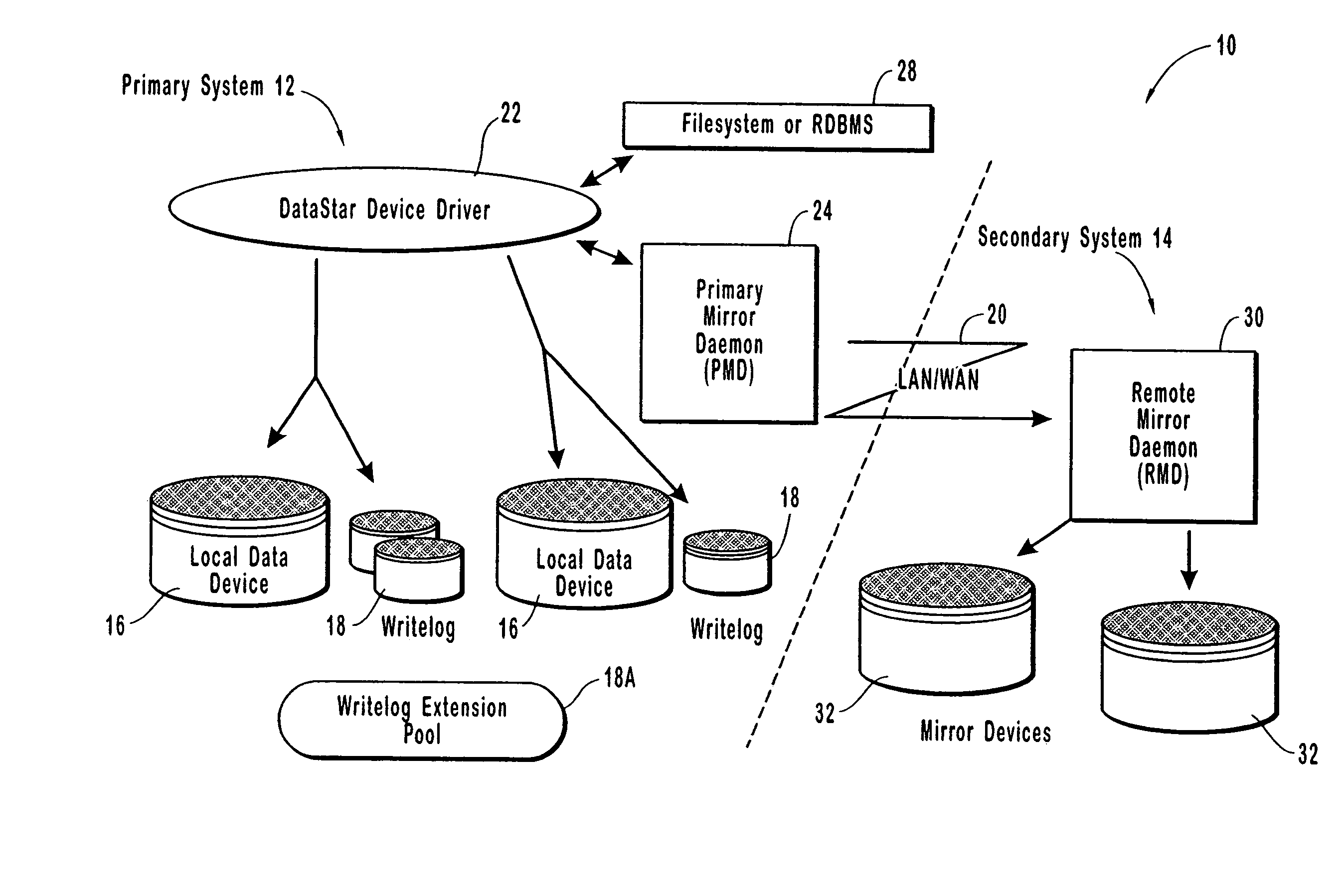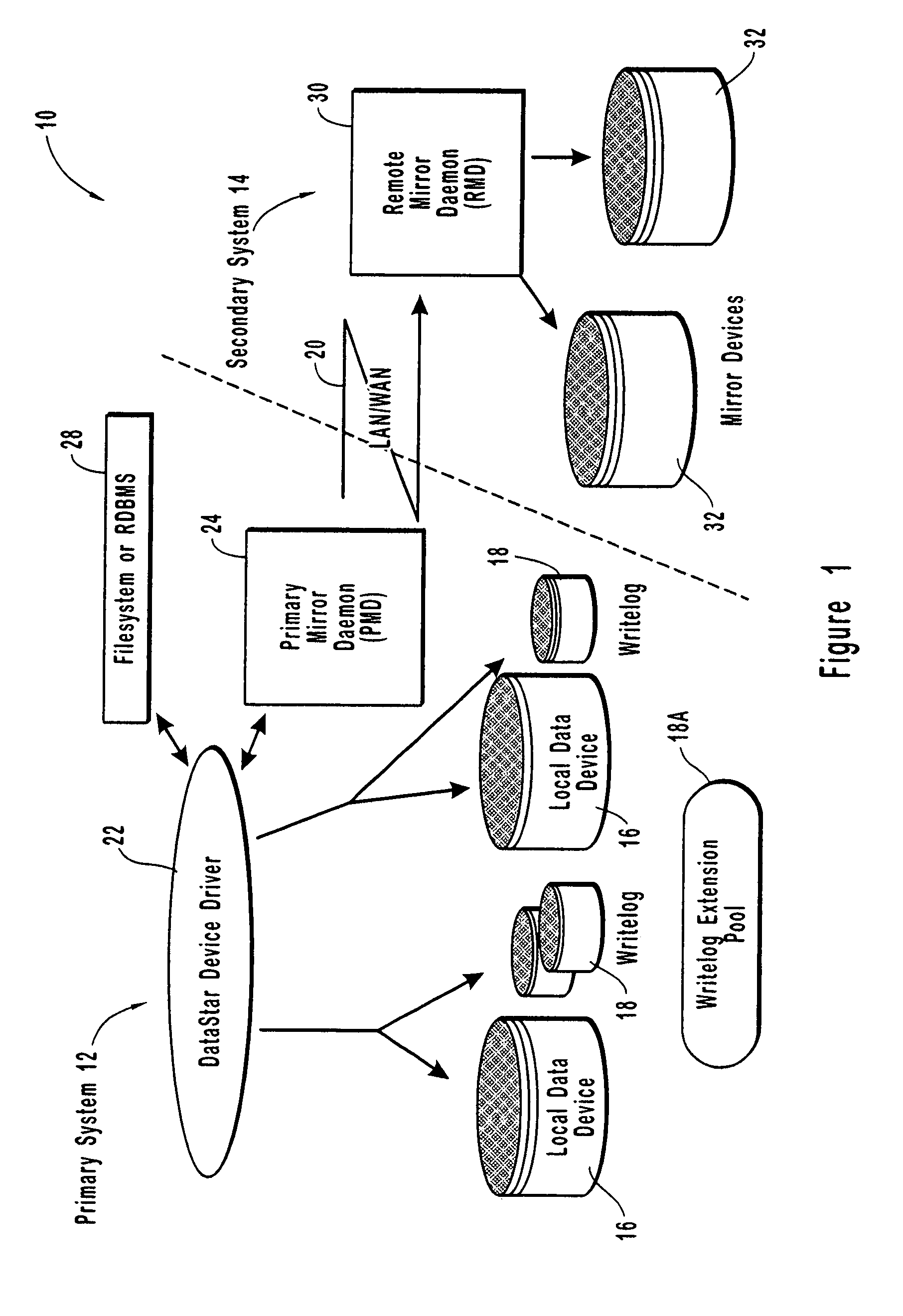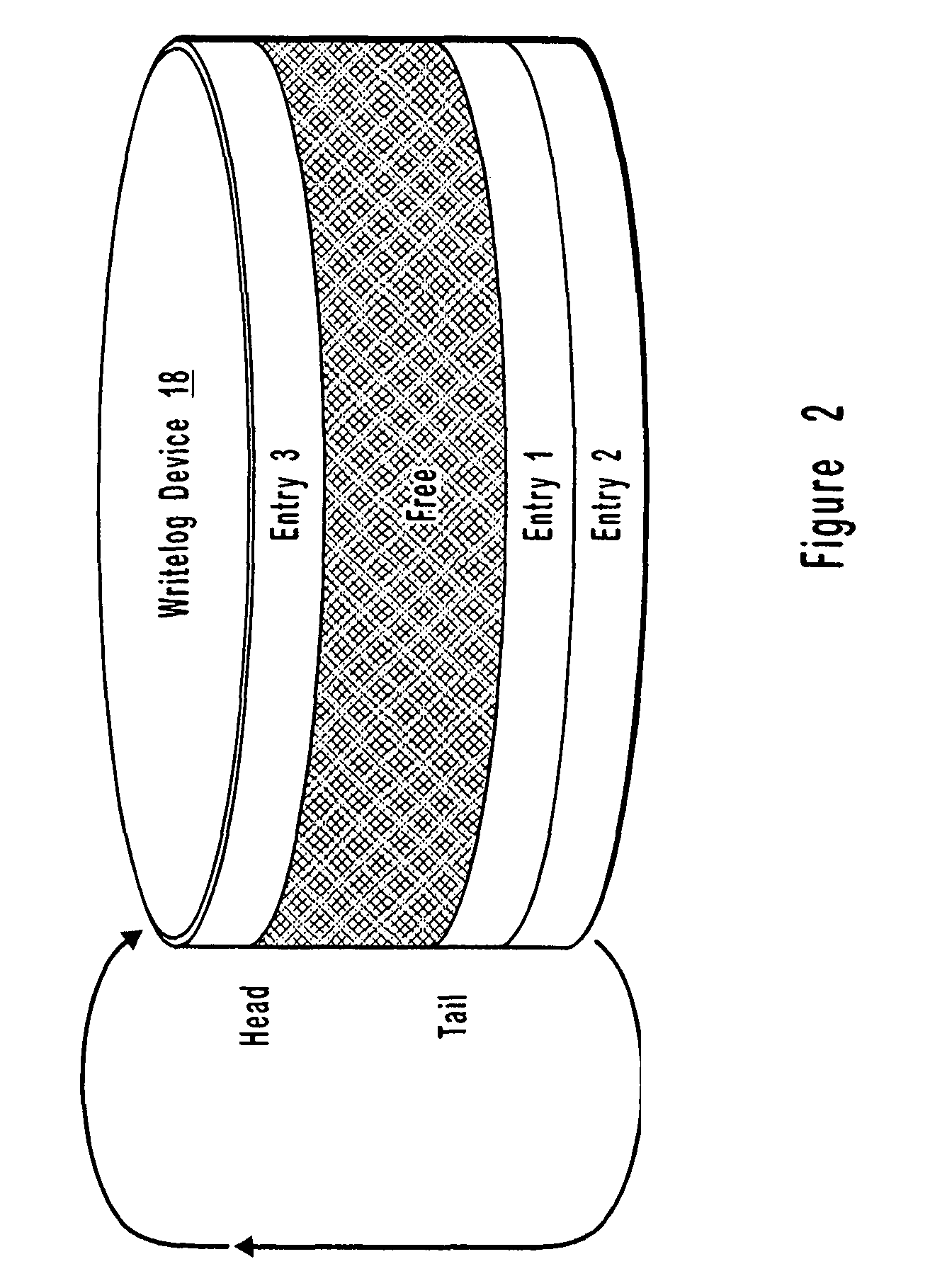[0014]The present invention provides methods and apparatus for a novel synchronous, asynchronous, or near synchronous computer system remote disk, or data, mirroring system over a network. Fundamentally, the
computer network remote data mirroring system in accordance with the present invention comprises an architecture to perform a data update both to a local data device and to a local, chronologically sequenced journal
storage area, or writelog device. In one embodiment, the writelog device comprises a redundant data storage device, such as a disk drive device. In another embodiment, the writelog device comprises cache memory and a
dirty bit map disk drive device to which data can be written from the cache memory to avoid a memory overflow condition. Advantageously, the device driver for the local data device and the writelog device is layered on top of the
operating system environment, so that the
computer network remote data mirroring system of the present invention ports to many commercially available computer systems. Once written to the local data device and the writelog device, I / O operation returns control to the application. This delivers to the application I / O performance comparable to simple local disk mirroring data mirroring system of the present invention ports to many commercially available computer systems.
[0015]Once written to the local data device and the writelog device, I / O operation returns control to the application. This delivers to the application I / O performance comparable to simple local disk mirroring.
[0017]In accordance with the present invention, the writelog device is configured so that more memory space is dynamically assigned to the writing device to prevent a memory overflow condition which might otherwise corrupt stored data. In the embodiment in which the writelog device comprises a disk drive device, additional
disk storage is dynamically assigned or another
disk storage device is chained into the local, or primary, computer system. In the embodiment in which the writelog device comprises cache memory and a
dirty bit map disk drive device, additional
disk storage is dynamically assigned or another disk drive is chained into the local, or primary, computer system to prevent memory overflow.
[0020]In accordance with the present invention, a method is provided for ensuring
data integrity through a systems failure while updates are occurring in parallel to two data storage devices, such as disk drive devices, simultaneously. The disks are simultaneously updated through a device driver. Preferably, each disk is provided with a disk interface, such as a
SCSI interface, to enhance reliability and speed of data updates. Consequently, data is written and thus stored substantially simultaneously on both the local data device and in the writelog device. The method in accordance with the present invention accommodates any of three conditions that may arise in the event of a system
crash. The first condition is that the same update data has been stored on both the local data device and in the writelog device; the second condition is that the update data was stored on the local data device, but failed to be stored in the writelog device; and the third condition is that the update data was written to the writelog device, but failed to be stored on the local data device. In accordance with the method of the present invention, the current update data is written to the writelog device, while the immediately preceding update is written to the local data device. If the local computer system crashes, upon
recovery or re-boot of the computer system, the two most current updates in the writelog device are written to the local data device to assure that the data stored on the local data device is current.
[0022]Preferably, the computer network remote data mirroring system of the present invention operates in an asynchronous mode. Consequently, the primary and remote mirror daemons are able to take
advantage of the entire network bandwidth during data transfers, as one would find in a synchronous mode, yet this is performed independently of the application. One drawback is that in the event of a disaster, the data on the secondary computer system may be up to several seconds older than what would be found on the primary computer system. However, this trade-off between application performance and data synchronicity presents the optimal compromise available between the two requirements. Alternatively, the computer network remote data mirroring system in accordance with the present invention can be operated in a synchronous mode to better assure data synchronicity at the expense of application performance. The computer network remote data mirroring system of the present invention also can alternatively be operated in a near synchronous mode to enable adjustment of the trade-off between application performance and data synchronicity.
[0023]The computer network remote data mirroring system in accordance with the present invention provides insurance for
mission critical data. The computer network remote data mirroring system of the present invention achieves high application performance by implementing asynchronous, synchronous, or near synchronous data mirroring using network
bandwidth throttling. It provides substantially real-
time data mirroring over LANs and WANs to quickly move data offsite, yet does not
impact application performance significantly. In the event of a disaster taking the primary
data center out of service for hours or days, operations can be transferred to a
secondary site within minutes, operating on an up-to-the-minute copy of the
original data set.
 Login to View More
Login to View More  Login to View More
Login to View More 


